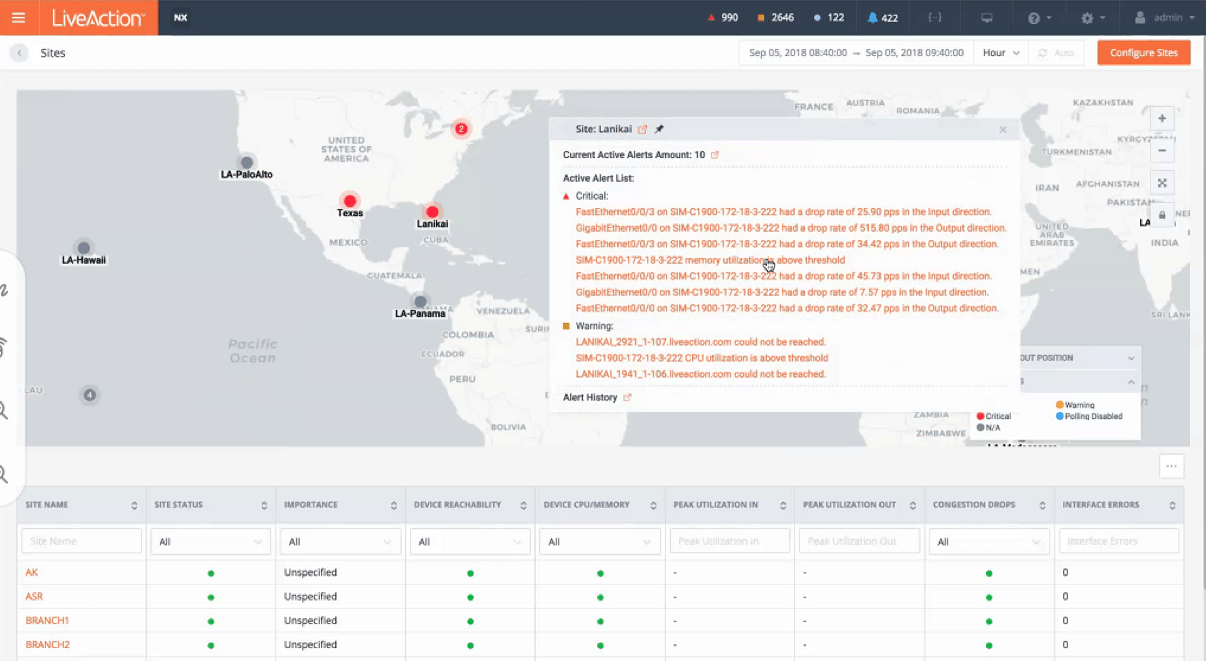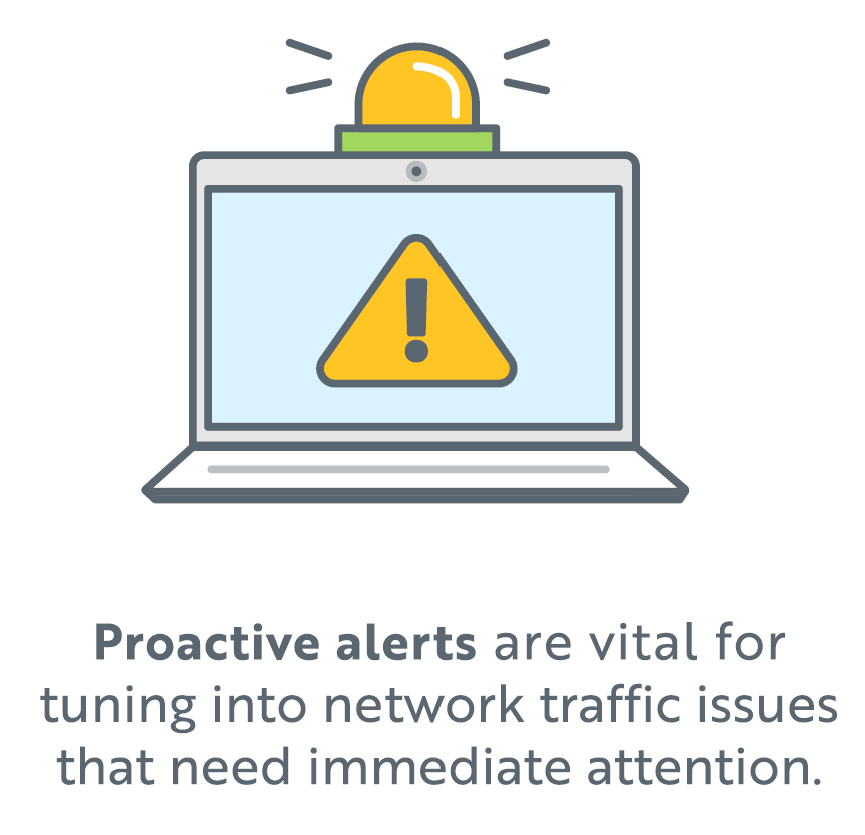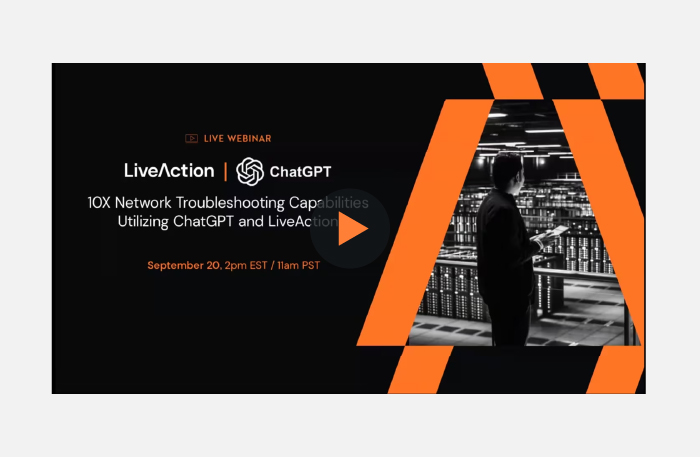
When an issue is occurring somewhere on the network, a NetOps or IT team member must be alerted promptly – and as soon as possible. In the event of the network going down, Gartner cites that it can cost an enterprise around $5,600 per minute! If that wasn’t a scary enough number, at that rate, an organization is paying upwards of $300,000 per hour of downtime. Previously, we’ve discussed how to avoid downtime, and another (crucial) tool in preventing issues like this is utilizing a network performance monitoring tool.
When choosing a new or replacing an existing NPM solution, the alerting capabilities are not overlooked. The organization and IT staff that will be living in the tool on the day-to-day should understand the different types of alerts, how they work, and what issues they can help you catch. Without proper alerting, your team will never be prompted to impending problems and instead will need to dig through complex real-time and historic data – an act akin to searching for a needle in a haystack.
Receive Network Alerts When it Matters Most
 It goes without saying that any NPM worth it’s salt should have a comprehensive alerting system. While this may be the tip of the iceberg, considering that any NetOps member would quickly drown in alerts if there was no ability to customize the frequency and severity of problems encroaching on the network. Simple warnings may be easy to ignore, but when working with a network performance monitoring tool, it’s incredibly important to mindfully create alerts for a myriad of situations.
It goes without saying that any NPM worth it’s salt should have a comprehensive alerting system. While this may be the tip of the iceberg, considering that any NetOps member would quickly drown in alerts if there was no ability to customize the frequency and severity of problems encroaching on the network. Simple warnings may be easy to ignore, but when working with a network performance monitoring tool, it’s incredibly important to mindfully create alerts for a myriad of situations.
Real-Time Alerts
Network performance monitoring and management solutions should be consistently checking the network. While the timing behind sweeps may vary between tools, most (if not all) of these platforms should be watching network traffic in real-time.
A network alerting tool with support for real-time detection and real-time network monitoring alerts can alert you to potential issues as soon as they’re detected. This is the most efficient alert type, as it enables your IT team to get to the issues as soon as possible, hopefully before end-users become impacted and performance is compromised.
Scheduling Alert Times
If every small anomaly causes an alert, your team will quickly become bogged down chasing a myriad of issues without much of a strategy. Customizing the frequency of alerts and when they send are possibly just as important as having the alerts at all! Receiving alerts during off-hours can be disastrous if there is not a team member that can readily repair challenges affecting your network. Creating a schedule that works with your organization’s schedule can be a lifesaver when it comes to ensuring that the alerts are going to the right people at the right time.
Additionally, most modern monitoring tools should be able to customize where you want those alerts sent, whether it’s email, text, in-dashboard views, or from a third-party application. This flexibility in alerting methods is key to keeping your team optimized and respecting their work-life balance.
Intelligent Alerts
Getting a notification that something is happening or will happen within an environment is not exactly… the most helpful. An NPM with intelligent (or smart) alerting assists an IT team with a bit more information when there is something happening. Typically, this can be a short descriptor of what is happening and where. A newer solution may even have the capability to provide troubleshooting tips or advice on how to handle the issue as well!
Intelligent alerts providing additional information must be quick and to the point to enable quick decision-making. Can’t forget about the hefty cost per minute of downtime, as the seconds tick away so do revenue and customer trust.
Critical Alerting

In addition to scheduling or customizing the what and where of network alerts, the ability to rank impending issues is crucial as well. When optimizing how you manage the network even minimizing the amounts of alerts received can provide a boon to performance and security. Critical and tiered alerting, which can also be referred to as a threshold alert, allows users to prioritize what is considered “critical” or when an issue has surpassed a certain threshold.
The NPM should have a function or feature to categorize alerts based on level of importance, which allows the user to separate non-critical alerts from the serious ones – allowing proper prioritization. Depending on what is needed, these tiered alerts will assign problems to one of several categories and then be sent depending on the level of importance of the said category. Reducing an unnecessary flood of less important notifications.
Choosing the Right Network Performance Monitoring Tool
Staying in the know with your network is one of the most important pieces when it comes to monitoring the network. Our network performance management platform is loaded with amazing features and capabilities – including robust reporting and alerting. Managing the network has never been easier with real-time visualization exposing QoS anomalies and service provider traffic classification issues. Reduce MTTR with a rapid incident response with Flow to packet analysis workflow optimization.
In the market for an NPM solution that unifies your data, but wondering what other features you need to keep an eye on? Check out our webinar on the essential criteria that every modern NPM must-have, to get the inside scoop from industry leaders about keeping up with emerging technologies and more. If you’re ready to give LiveNX a try, sign up for a 14-day free trial and see what makes us tick!


